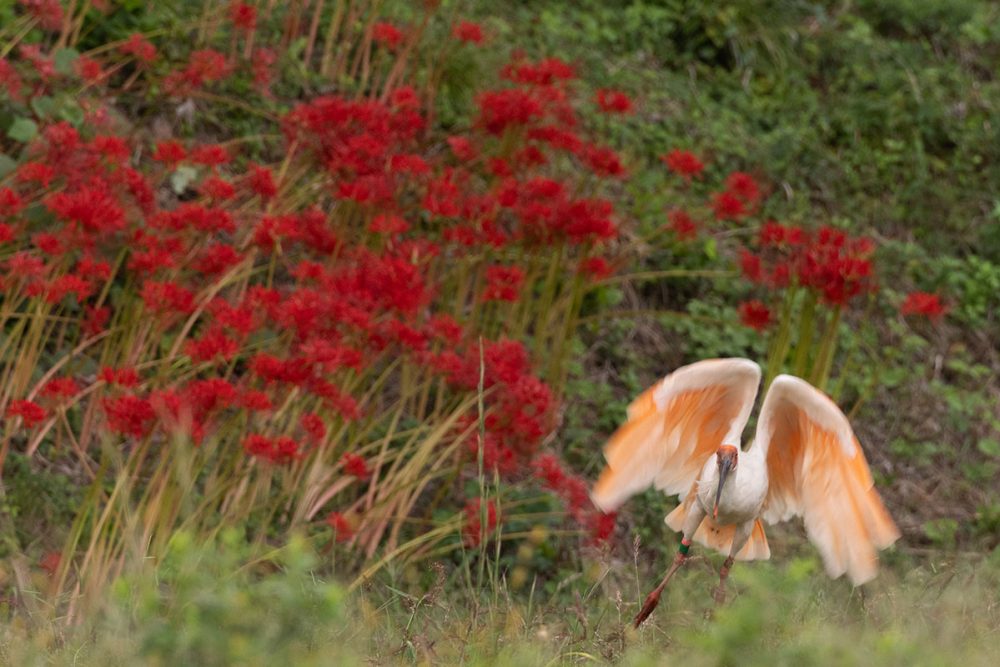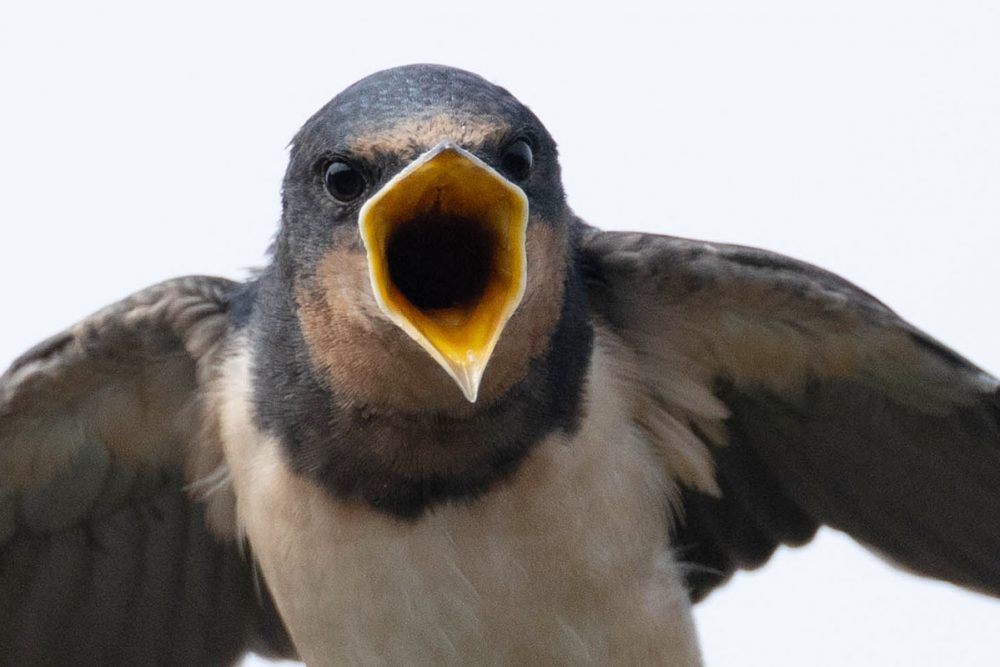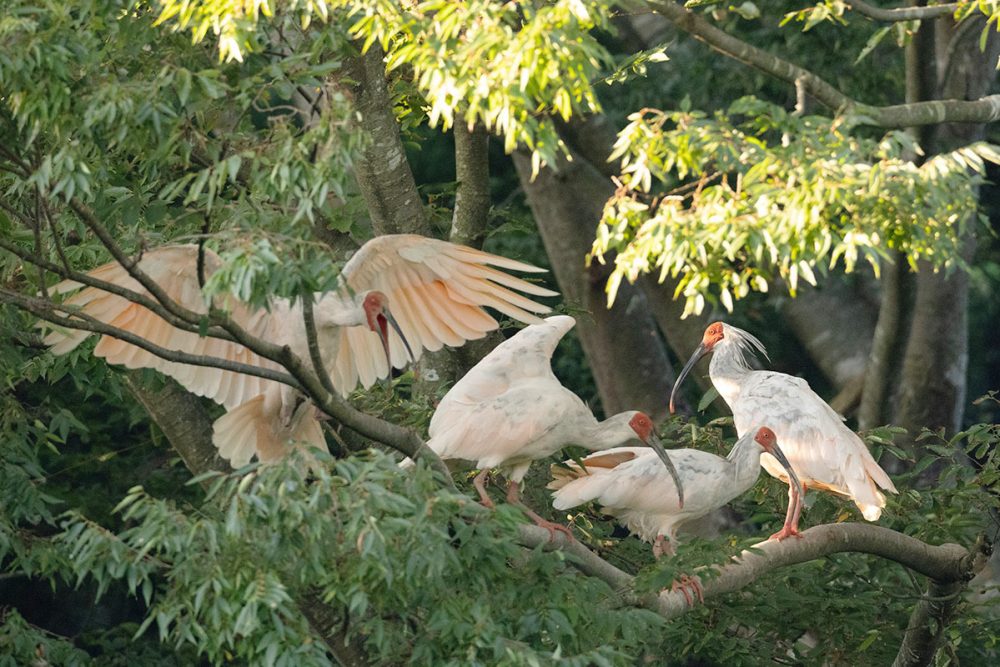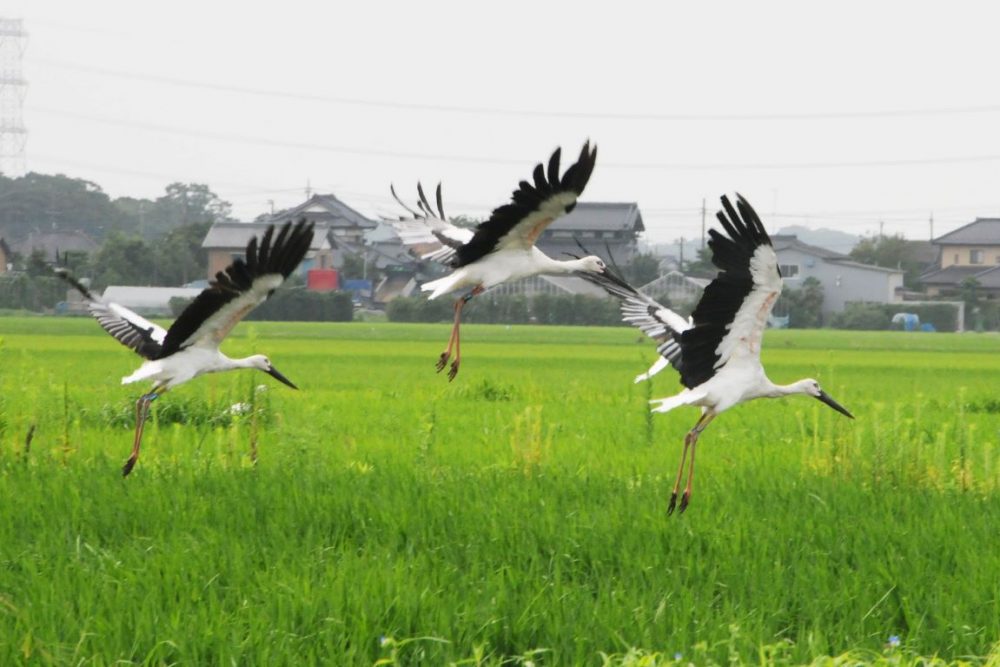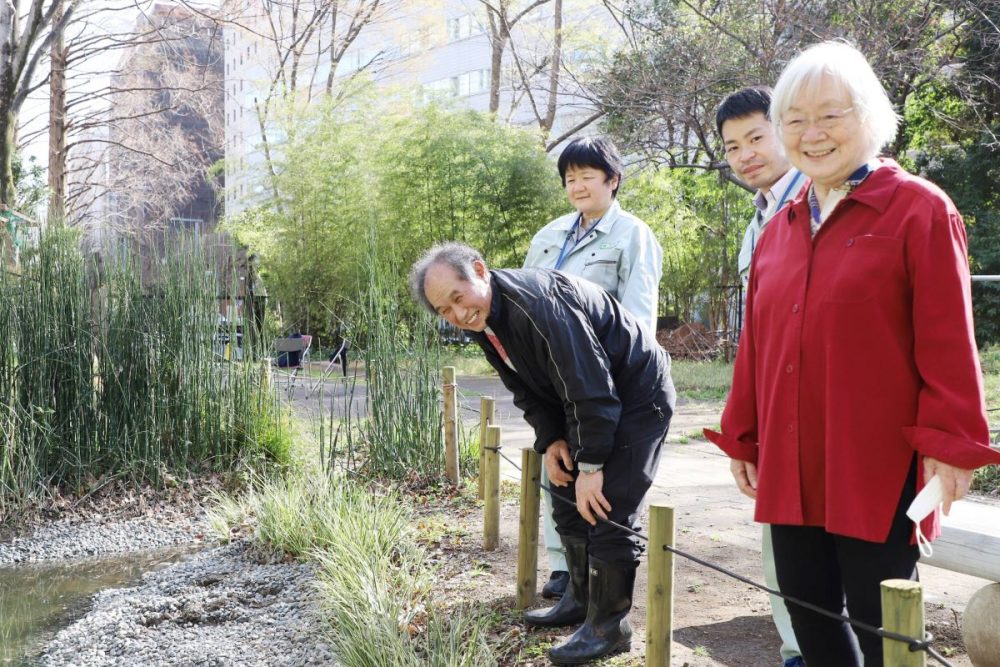'Satoyama' in Photos by Mitsuhiko Imamori: People and Nature in Harmony
One of the largest photo exhibitions ever on the theme of "satoyama" by the renowned Japanese nature photographer is on in Tokyo through September 29.
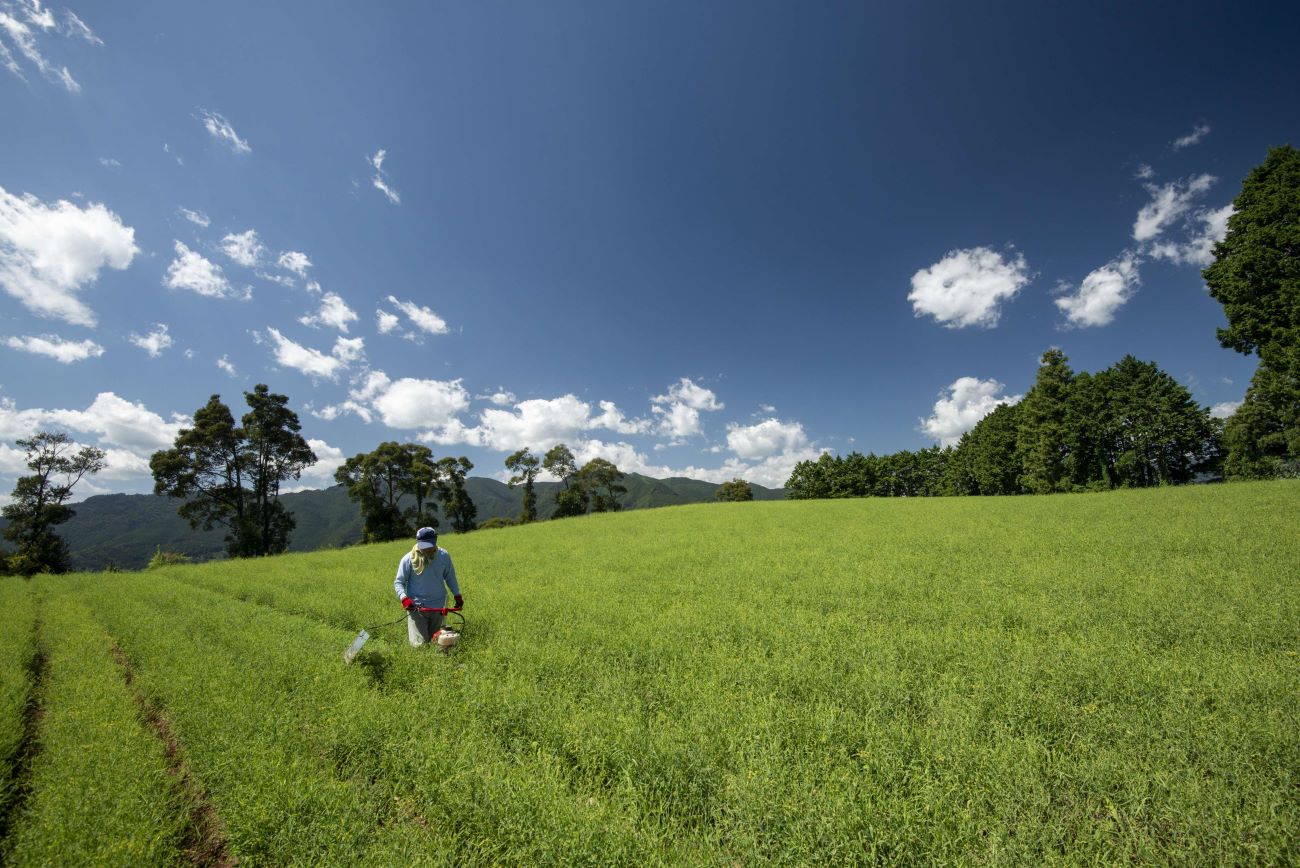
このページを 日本語 で読む
An exhibition of fascinating works of Japan's satoyama is now underway at the Tokyo Photographic Art Museum. It is on works by the country's top nature photographer Mitsuhiko Imamori, who popularized the term and concept of satoyama.
On through September 29, the exhibition is titled "Satoyama: Harmony with Nature and Resilience in Japan." With more than 190 photographs, it is one of the largest of his many photo exhibitions. Additionally, there are some 110 images in a slide show. Many of Imamori's latest works are being shown for the first time.
Beautiful scenes and landscapes of satoyama in his home area around Lake Biwa in Shiga Prefecture are on display. He has photographed these areas for more than 30 years. His works include satoyama at more than 200 locations, shot as he traveled throughout the country over the last 20 years.

Satoyama Harmony
The photographs are fascinating and attractive – and many of them are thought-provoking. They have also captured wonderful scenes and moments of people and living things in the natural environment. These give us insights into the delicate relationships between people and nature living in harmony, without interfering with each other.
Before he popularized satoyama, the term was used in the forest ecological lexicon. It describes the agricultural environment spreading between the areas people inhabit and the mountains beyond. Imamori says he has expanded the concept more freely to cover "all spaces where living beings, including people, and nature exist together."
This concept of satoyama soon caught the hearts and minds of many Japanese. It was popularized through his photographs and writings as well as serialized television programs. All of them speak to the synergy of beautiful landscapes of rice fields and flowers, together with the insects and other critters living there. It has become a household term in Japan today.
The term and concept came to be known internationally when the "Satoyama Initiative" was adopted at the Conference of the Parties (COP10) of the Convention on Biological Diversity in Nagoya in 2010. It promotes the concepts of satoyama for conserving biodiversity in the world.

Imamori's Story
Imamori was born in 1954. He started his career as a freelance photographer in 1980, shooting landscapes of the natural environment around Lake Biwa. His images were filled with rice paddies, creatures like fish, birds, animals, and insects. Throughout, his images showed people living and working there.
In 1992 he began the photo serial "Satoyama Monogatari" (Satoyama Story) in a nature-focused magazine. There, at the start of the series, he defined satoyama as: "[A] traditional Japanese agricultural environment where people and living things coexist." Satoyama, therefore, consists of not only mountains and farmlands but also fishing areas of the sea and lakes.
Many of the photos in his "Satoyama Monogatari" – and in the current exhibition – were taken in his own satoyama in Ohgi on the western side of Lake Biwa. More than 35 years ago he purchased a deserted satoyama, with a total area of 1,000 tsubo (some 3,300 square meters). He then restored it as satoyama with a forest, rice paddies, and all other satoyama elements, through hard work over many years.
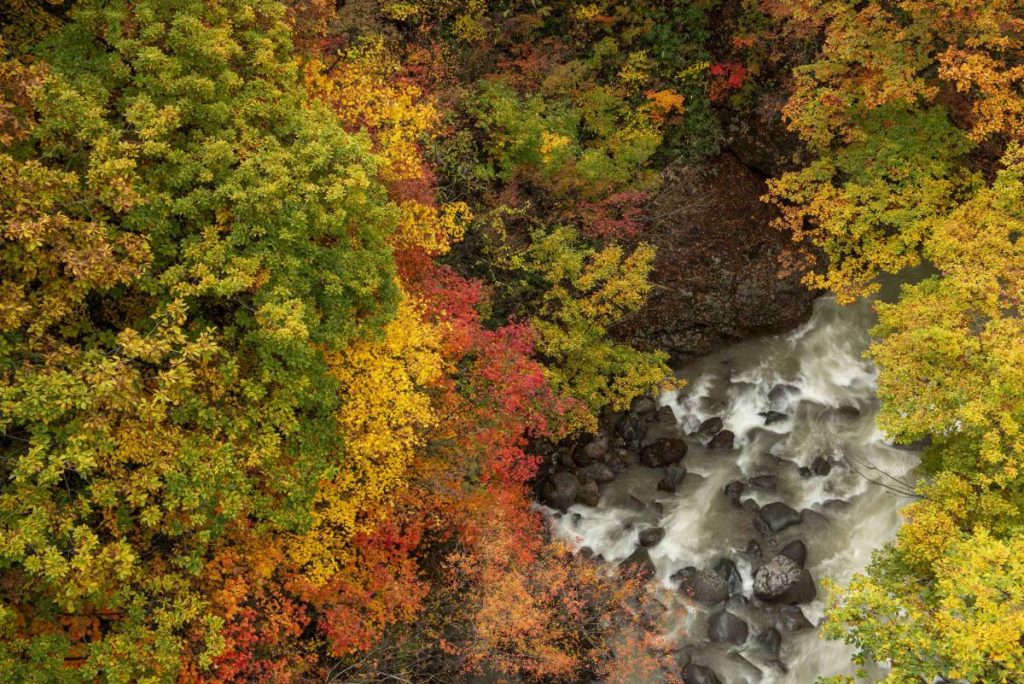
Butterflies and Beetles
He replaced a hinoki (Japanese cypress) forest with deciduous broad-leaf trees like oak and other varieties. These allow plants to grow under the trees and insects to inhabit them. Beetles like those trees. Every year he selects more trees and plants, adding them to make it a more livable, sustainable environment for insects, birds, and animals.
Imamori named his satoyama "Aurelian Garden," meaning "butterfly lover's garden." He says some 70 different species of butterflies have now come to inhabit it alongside many other insects. After three and a half decades, he is still busy working year-round to improve and maintain it.
From his childhood, Imamori was a bug-loving boy who collected butterflies and all other kinds of insects. He began photographing insects in his home area around Lake Biwa in his early years. Then he expanded his range throughout Japan and the world. Wonderful volumes with illustrations of butterflies in Japan and of the world are among his many award-winning books. Among those awards, in 1995 he won the highly coveted Ihei Kimura Award for his photography in "Satoyama Monogatari" (published by Shinchosha).
A Symbolic Photo of Women Picking 'Katakuri'
At the entrance to the exhibition, visitors are greeted by a huge photo panel of village women picking katakuri (Erythronium Japonicum, dogtooth violet) in full bloom. It is a very typical satoyama scene symbolic of what the visitors will see throughout the exhibition. That is the relationship between people and nature, coexisting in harmony.
These women collect katakuri to eat by breaking the blossoms off from the middle of the stems. They don't pick the whole plant and intentionally leave its roots in the ground. That way, the woodland plant will come out to bloom again the next spring. This is the lifestyle of satoyama people who utilize natural resources without depleting them.

Four Seasons and Mountain Gods
The exhibition is divided into four seasonal sections – Spring, Summer, Autumn, and Winter – plus a slide show booth. At the outset of the Spring section, there are three large photos of beautiful, snow-clad mountains. One shows rapeseed flowers in bloom in the front. Another with fresh verdure vegetation, and a third is filled with cherry blossoms. They immediately catch visitors' eyes.
One of them is titled "The gods have descended from the mountain." Imamori says in the exhibition catalog that when he was photographing satoyama, he "was particular about landscapes with mountains." He adds "The people of satoyama see mountains as sacred, as spiritual strongholds."
Since olden times, Japanese people have worshiped mountains as they believed gods dwell in the mountains. Those gods would then come down to their farmland or satoyama. A wide variety of mountains in Japan are captured in his satoyama photos with different seasonal colors, autumn leaves, and winter snow.
In addition to the katakuri picking, the exhibition features many photos of people working in satoyama picking tea leaves, collecting sansai (edible wild plants), planting rice, and thinning apple blossoms. Scenes of people's labor in satoyama make particularly beautiful photographs in the exhibition.
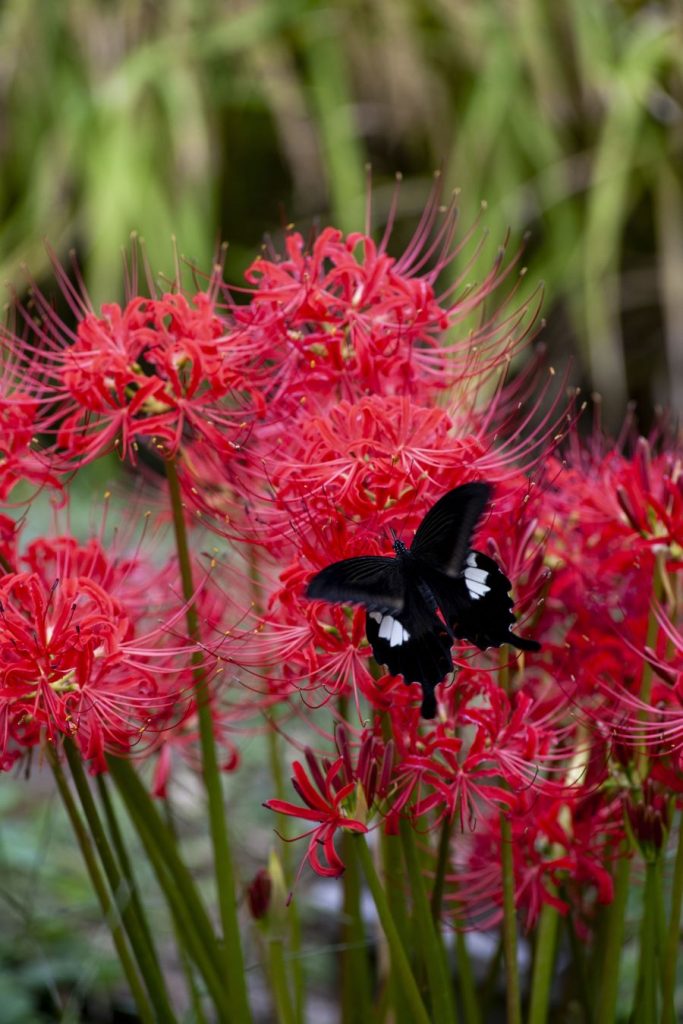
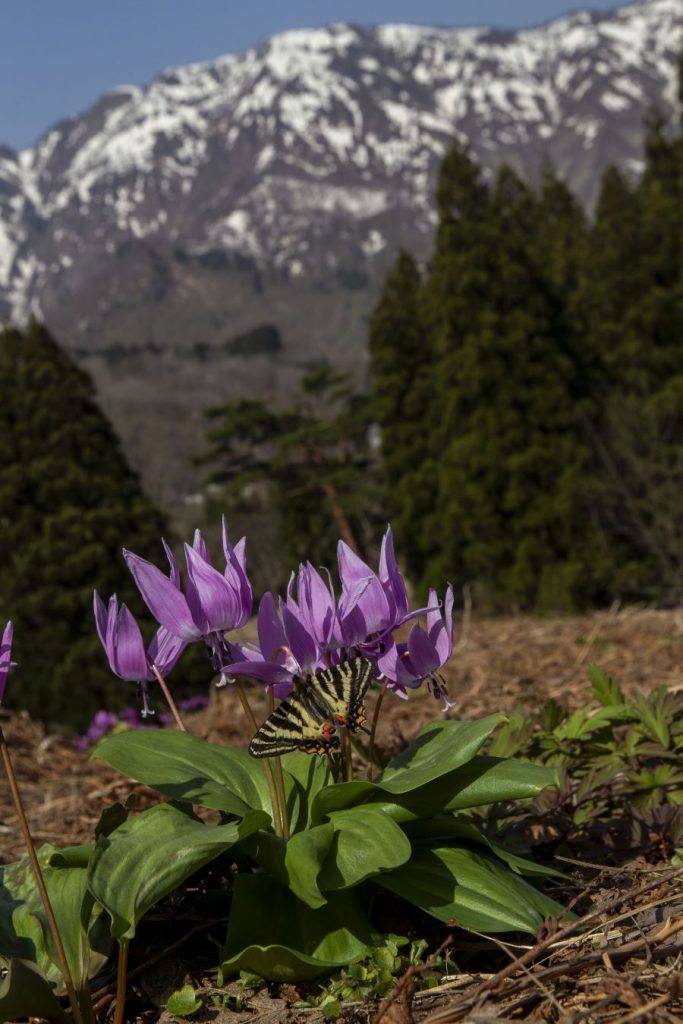
Butterfly Photos a Story of Life
Another feature is a variety of about 20 photos of critters that are all important players in satoyama. There are insects, particularly butterflies, and various other creatures, like birds, frogs, cattle, and even a monkey. There is also a Japanese serow (goat-like mammal). Behind his photos, visitors may sense the warmness of Imamori as a naturalist as he presents these living things.
One especially compelling photo in the Spring section is titled "Gifu butterfly (Luehdorfia japonica) visiting dogtooth violet." It is shown next to the photo of women collecting katakuri. The image captures a beautiful scene of a butterfly visiting purple katakuri flowers, with snow-clad mountain ridges in the distance. However, you could also read a deeper story of life in it, if you like.
The butterfly, listed as an endangered species, emerges in around April after spending about 10 months through the summer and winter as a pupa. It lays eggs on the food plant before dying only about two weeks after emerging. This life cycle must have been in his mind when Imamori pressed the shutter toward this winged insect called "the goddess of spring" visiting katakuri. The plant is also known as a "spring ephemeral" for its beautiful but short life.
This photo, displayed along with two more photos – one "Gifu butterfly hatches" and the other "Princess Gifu butterfly (Luehdorfia puziloi) eggs laid on a wild ginger leaf" – says much about the severity and wonder of their lives.

'Tanada' Terraced Rice Paddies Key in Satoyama
In satoyama landscapes, rice paddies, particularly tanada terraced rice paddies dominate. Indeed, we cannot imagine satoyama without rice paddies. And in this exhibition, many scenes of tanada in different seasons – with water-filled paddies, with farmers planting rice, and with golden-colored grains waiting for harvesting – are abundant. Most impressive among them is a fantastic scene of the celebrated tanada in Toka-machi, Niigata Prefecture, titled "Morning mist at terraced fields."
In the exhibition catalog, Imamori says "Tanada terraced fields or terraced rice paddies are an exemplary environment, space that is the prototype for my satoyama story." He says, "They are essential. [And] they are not important merely as farmland that connects the mountains with human habitation. They also have ecological functions as water systems." He points out "They are important for virtually all biological diversity."
These works remind us of the relationship between people and nature and how to live in harmony with our environment. At the same time, Imamori seems to be challenging us to decide how we can help preserve satoyama. – and our relationship with nature. Therefore, his beautiful satoyama works remind us of what could disappear soon unless we attend to them.
-725x1024.jpg)
The Exhibition
What: "Satoyama," photographs by Mitsuhiko Imamori
Where: The Tokyo Photographic Art Museum,
in Ebisu Garden Place, Meguro-ku, Tokyo,
When: Through September 29, 2024
Hours: 10:00-18:00. Closed on Mondays.
Admission: 700 yen for adults, 560 yen for students, 350 yen for junior and senior high school students, seniors 65 years and older.
For additional information: Contact the museum:
Tel. 03-3280-0099 or check its website
(English) or (Japanese)
This article was originally published on JAPAN Forward on September 1, 2024.
このページを 日本語 で読む






